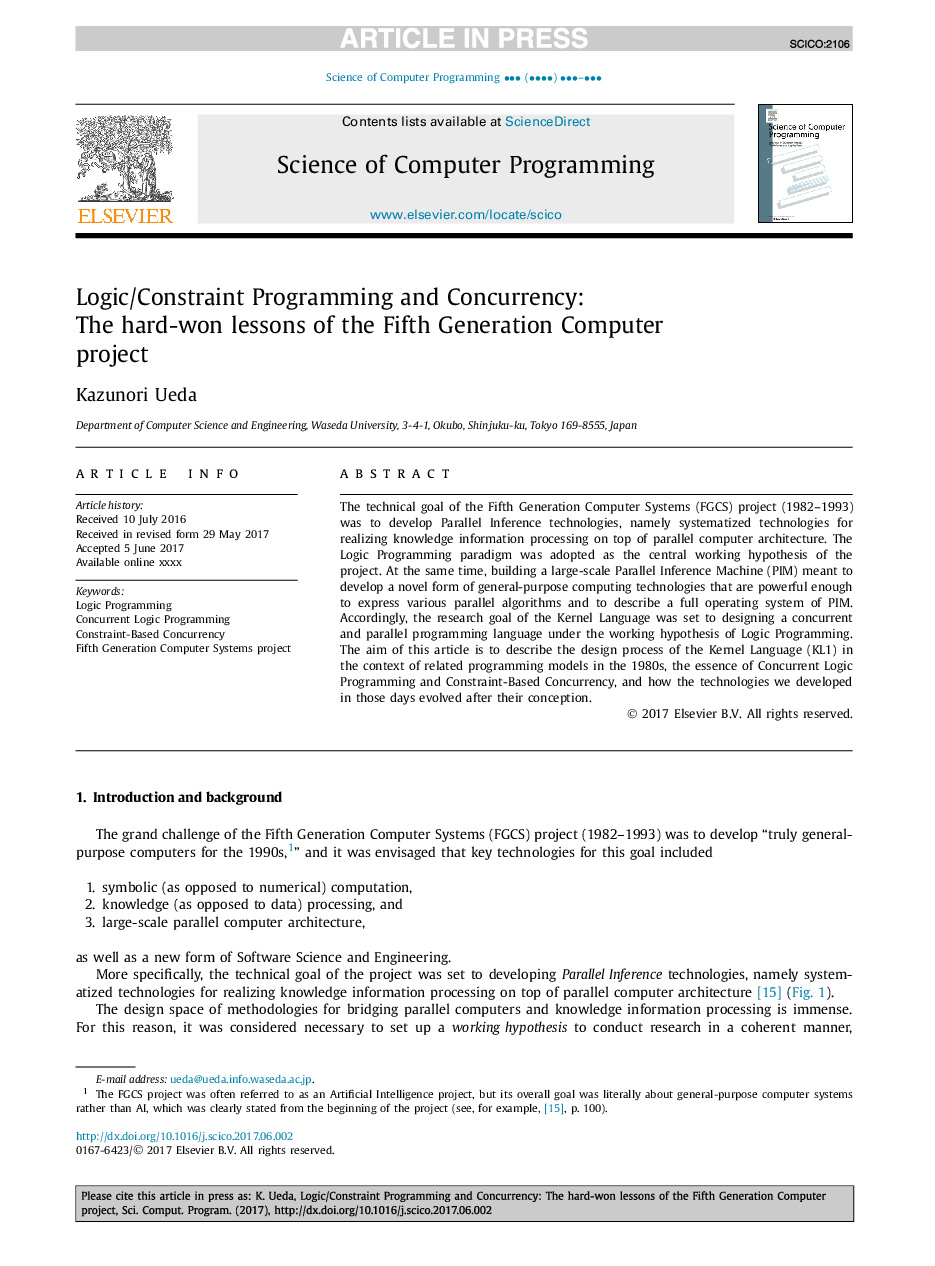| Article ID | Journal | Published Year | Pages | File Type |
|---|---|---|---|---|
| 6875164 | Science of Computer Programming | 2018 | 15 Pages |
Abstract
The technical goal of the Fifth Generation Computer Systems (FGCS) project (1982-1993) was to develop Parallel Inference technologies, namely systematized technologies for realizing knowledge information processing on top of parallel computer architecture. The Logic Programming paradigm was adopted as the central working hypothesis of the project. At the same time, building a large-scale Parallel Inference Machine (PIM) meant to develop a novel form of general-purpose computing technologies that are powerful enough to express various parallel algorithms and to describe a full operating system of PIM. Accordingly, the research goal of the Kernel Language was set to designing a concurrent and parallel programming language under the working hypothesis of Logic Programming. The aim of this article is to describe the design process of the Kernel Language (KL1) in the context of related programming models in the 1980s, the essence of Concurrent Logic Programming and Constraint-Based Concurrency, and how the technologies we developed in those days evolved after their conception.
Keywords
Related Topics
Physical Sciences and Engineering
Computer Science
Computational Theory and Mathematics
Authors
Kazunori Ueda,
